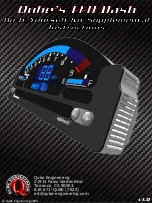
The PS7000 Pressure Sensor utilizes a ceramic-based, capacitive element as the transducer. This is designed to be of
rugged construction and incorporates active electronics as an integral part of the transducer substrate to enhance
reliability and accuracy. Force applied to the ceramic element, due to the pressure, deforms its shape. This
deformation causes a change in capacitance which can be measured by the electronics. The inherently stability and
toughness of the ceramic ensures the repeatability and long term accuracy of the readings are maintained under the
harshest field conditions.
The on board microprocessor converts the transducer output voltage to a digital signal and also measures the
transducer temperature. This information is used to temperature compensate the sensor over the range 0 - 50°C. The
result is converted to an analogue output of typically 4-20mA.
Benefits of the Ceramic Capacitance Sensors over other types of sensors are:
Extremely high overload limit (typically up to 10 X overload protection)
Absolute resistant to wear
High temperature stability
Excellent Long term stability
Excellent Repeatability and linearity
No hysteresis effects normally associated with Strain Type Sensors
Corrosion resistant – Other sensors require contact of stainless steel face
Not subject to mechanical fatigue that may affect strain gauge type sensors
Low power consumption suitable for remote monitoring & control units









































